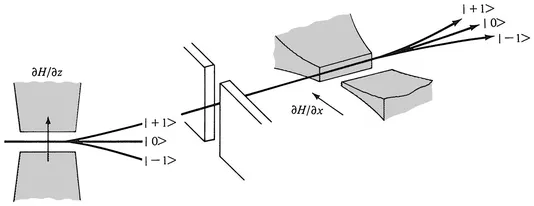
Molecules and Radiation
An Introduction to Modern Molecular Spectroscopy. Second Edition
- 528 pages
- English
- ePUB (mobile friendly)
- Available on iOS & Android
Molecules and Radiation
An Introduction to Modern Molecular Spectroscopy. Second Edition
About This Book
This unified treatment introduces upper-level undergraduates and graduate students to the concepts and methods of modern molecular spectroscopy and their applications to quantum electronics, lasers, and related optical phenomena.
Starting with a review of the prerequisite quantum mechanical background, the text examines atomic spectra and diatomic molecules, including the rotation and vibration of diatomic molecules and their electronic spectra. A discussion of rudimentary group theory advances to considerations of the rotational spectra of polyatomic molecules and their vibrational and electronic spectra; molecular beams, masers, and lasers; and a variety of forms of spectroscopy, including optical resonance spectroscopy, coherent transient spectroscopy, multiple-photon spectroscopy, and spectroscopy beyond molecular constants. The text concludes with a series of useful appendixes.
Frequently asked questions
Information
1
Review of the Quantum Mechanical Background
1 State Vector Notation



Table of contents
- Title Page
- Copyright Page
- Dedication
- Table of Contents
- Preface to the Second Edition
- Preface to the First Edition
- 1 - Review of the Quantum Mechanical Background
- 2 - Atomic Spectra
- 3 - Diatomic Molecules
- 4 - Rotation and Vibration of Diatomic Molecules
- 5 - Electronic Spectra of Diatomic Molecules
- 6 - Rudimentary Group Theory
- 7 - Rotational Spectra of Polyatomic Molecules
- 8 - Vibrational Spectra of Polyatomic Molecules
- 9 - Electronic Spectra of Polyatomic Molecules
- 10 - From Molecular Beams to Masers to Lasers
- 11 - Optical Resonance Spectroscopy
- 12 - Coherent Transient Spectroscopy
- 13 - Multiple-Photon Spectroscopy
- 14 - Spectroscopy beyond Molecular Constants
- Appendix A Direct Product Tables
- Appendix B Lagrangian Mechanics
- Appendix D Dipole Correlation and Spectral Density Functions
- Appendix E The Literature of Spectroscopy
- Index